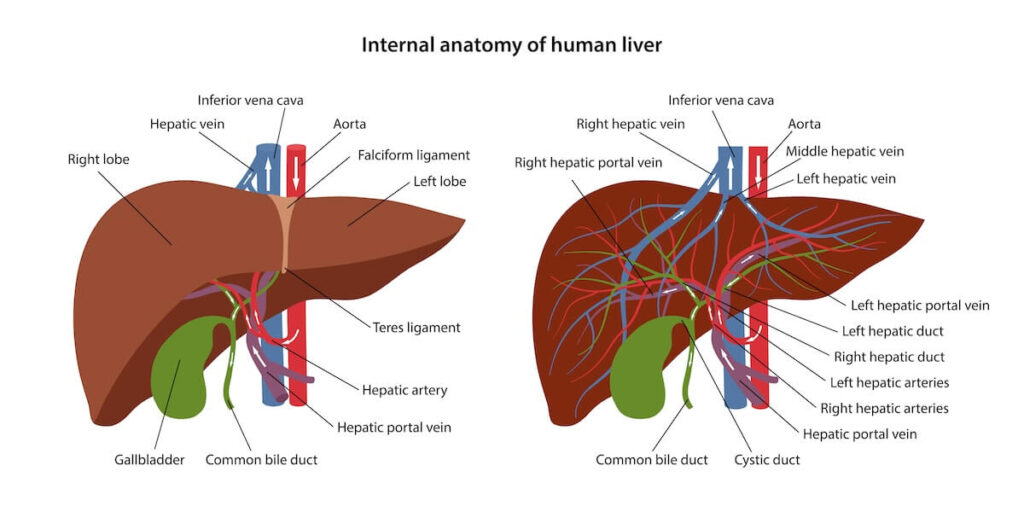Non-Alcoholic Fatty Liver Disease (NAFLD) is a growing health concern globally. Affecting nearly a quarter of the world’s population, it’s a condition where fat accumulates in the liver of individuals who consume little to no alcohol. If left unchecked, NAFLD can progress to more severe liver diseases, such as Non-Alcoholic Steatohepatitis (NASH), fibrosis, cirrhosis, or even liver cancer. Understanding NAFLD and taking proactive steps to prevent it is essential for maintaining liver health and overall well-being.
What Is NAFLD?
NAFLD occurs when excess fat builds up in the liver, leading to inflammation and damage. Unlike other forms of liver disease, NAFLD isn’t caused by heavy alcohol consumption. Instead, it’s closely linked to obesity, insulin resistance, and metabolic syndrome—a cluster of conditions that includes high blood pressure, high blood sugar, excess body fat around the waist, and abnormal cholesterol levels.
There are two main types of NAFLD:
- Simple Fatty Liver (Steatosis): Fat accumulates in the liver, but there is little or no inflammation or liver cell damage. This type is generally less severe.
- Non-Alcoholic Steatohepatitis (NASH): Fat accumulation is accompanied by inflammation and liver cell damage, which can lead to fibrosis (scarring) of the liver. NASH is more serious and can progress to cirrhosis or liver cancer.
Risk Factors for NAFLD
Several factors increase the risk of developing NAFLD, including:
- Obesity: Excess body weight, especially abdominal fat, is one of the most significant risk factors.
- Type 2 Diabetes: High blood sugar and insulin resistance contribute to fat accumulation in the liver.
- Metabolic Syndrome: A combination of obesity, hypertension, high cholesterol, and insulin resistance increases the risk.
- High Cholesterol and Triglycerides: Elevated levels of fat in the blood can lead to fatty deposits in the liver.
- Sedentary Lifestyle: Lack of physical activity contributes to weight gain and insulin resistance, increasing NAFLD risk.
Symptoms and Diagnosis
NAFLD is often called a “silent” disease because many people have no symptoms, especially in the early stages. When symptoms do occur, they may include fatigue, discomfort in the upper right abdomen, or unexplained weight loss.
Diagnosis usually involves blood tests to check liver enzymes, imaging tests like an ultrasound or MRI to detect fat in the liver, and sometimes a liver biopsy to assess the extent of liver damage.

How to Avoid NAFLD
Preventing NAFLD largely revolves around making healthy lifestyle choices. Here are some key strategies:
- Maintain a Healthy Weight:
- Aim for gradual weight loss if you are overweight or obese. Even a modest reduction in body weight (5-10%) can significantly reduce liver fat.
- Focus on a balanced diet rich in fruits, vegetables, whole grains, lean proteins, and healthy fats.
- Exercise Regularly:
- Engage in regular physical activity, such as brisk walking, cycling, or swimming, for at least 150 minutes per week.
- Strength training exercises can also help reduce fat, build muscle, and improve insulin sensitivity.
- Control Blood Sugar and Cholesterol Levels:
- If you have diabetes or prediabetes, monitor your blood sugar levels and follow your doctor’s recommendations for managing the condition.
- Maintain healthy cholesterol especially triglyceride levels through diet, exercise, and, if necessary, medication.
- Avoid Sugary Foods and Beverages:
- High sugar intake, especially from sugary drinks, is linked to increased liver fat. Reducing consumption of sugar-laden foods and beverages can help prevent NAFLD.
- Limit Processed Foods:
- Processed foods often contain unhealthy fats, sugars, and additives that contribute to weight gain and insulin resistance. Opt for whole, unprocessed foods whenever possible.
- Regular Health Check-Ups:
- Routine health check-ups can help detect early signs of NAFLD, especially if you have risk factors like obesity, diabetes, or metabolic syndrome.
Conclusion
NAFLD is a common but preventable liver condition that can have serious consequences if ignored. By making healthy lifestyle choices—such as maintaining a healthy weight, exercising regularly, and managing blood sugar and cholesterol levels—you can significantly reduce your risk of developing NAFLD. Taking proactive steps now can protect your liver and overall health for years to come.
